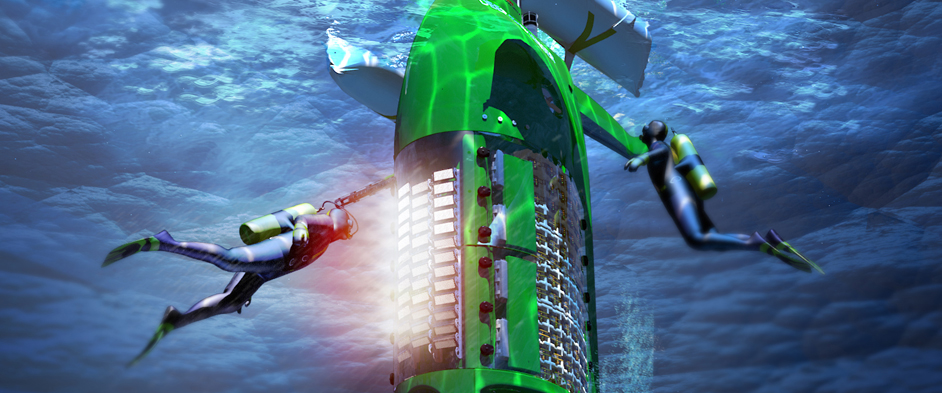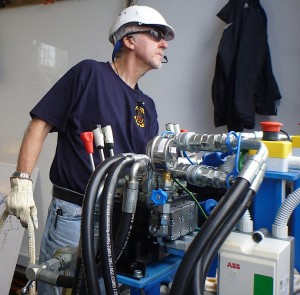SAFETY

As with spaceships, deep-sea submersibles must be engineered to accommodate innumerable challenges, including dramatic changes in pressure and a total absence of light. In the process of meeting these challenges, the DEEPSEA CHALLENGER expedition team built upon the invaluable contributions of its predecessors and peers to make historic breakthroughs in submersible design, research tools, and underwater videography.
Here is how the team prepared to address potential complications.
WEATHER
Due to its streamlined form, the sub can rise to the surface in just over an hour from full ocean depth, so it can be recalled relatively quickly if the weather is seen to be worsening, which adds risks to the recovery process.
LOSS OF COMMUNICATION
If the sub and the crew on the surface lose contact for more than an hour, a “sub miss” will be declared. The crew will try to reestablish communication, assess life-support data (oxygen, temperature, etc.), and, if possible, locate the sub through a number of systems. If this is unsuccessful, the crew will send an acoustic signal to the sub to release its weights, freeing the sub to rise to the surface. If that doesn’t work, the team will wait a number of hours for the weights to drop on their own following corrosion of the back-up galvanic releases.
IN-WATER EGRESS
Normally, the sub will be lifted out of the water by a crane, and James Cameron or Ron Allum will exit once the vehicle is safely on the deck of the Mermaid Sapphire. However, exiting the sub while it’s still in the water is possible in the event the sub can’t be recovered back to its cradle on the ship, such as if the crane malfunctioned or the sea-state was too high. In that case the In-Water Egress Procedure will be followed. This involves rigging the airbags differently so that instead of bringing the sub into a horizontal position with the hatch facing up, as on a normal recovery, it’s done with the hatch facing downward. Then the pilot will equalize the internal pressure using an air bottle under his seat, and the divers will open the hatch. In the inverted position, the pilot sphere becomes an “air bell,” like in an open-bottomed diving bell. A composite fairing, called the “egress skirt,” is used to trap air beneath the hatch so that when it falls open, the sub’s internal electronics aren’t sprayed with seawater. Then the pilot will emerge feet first and receive a breathing regulator from one of the recovery divers. Since both Cameron and Allum are highly experienced divers, this should be straightforward.

Photograph by Dr. Joe MacInnis
James Cameron closely watches the sub’s behavior.
LOST SUB
The top of the sub is crammed with locating and lighting systems (including a strobe that can be seen for miles at night) to help the ship find the sub once it surfaces. If that doesn’t work, an aircraft on standby in Guam will do an aerial search, hoping to pick up on the sub’s VHF GPS, which has a 50-mile (80-kilometer) range.



